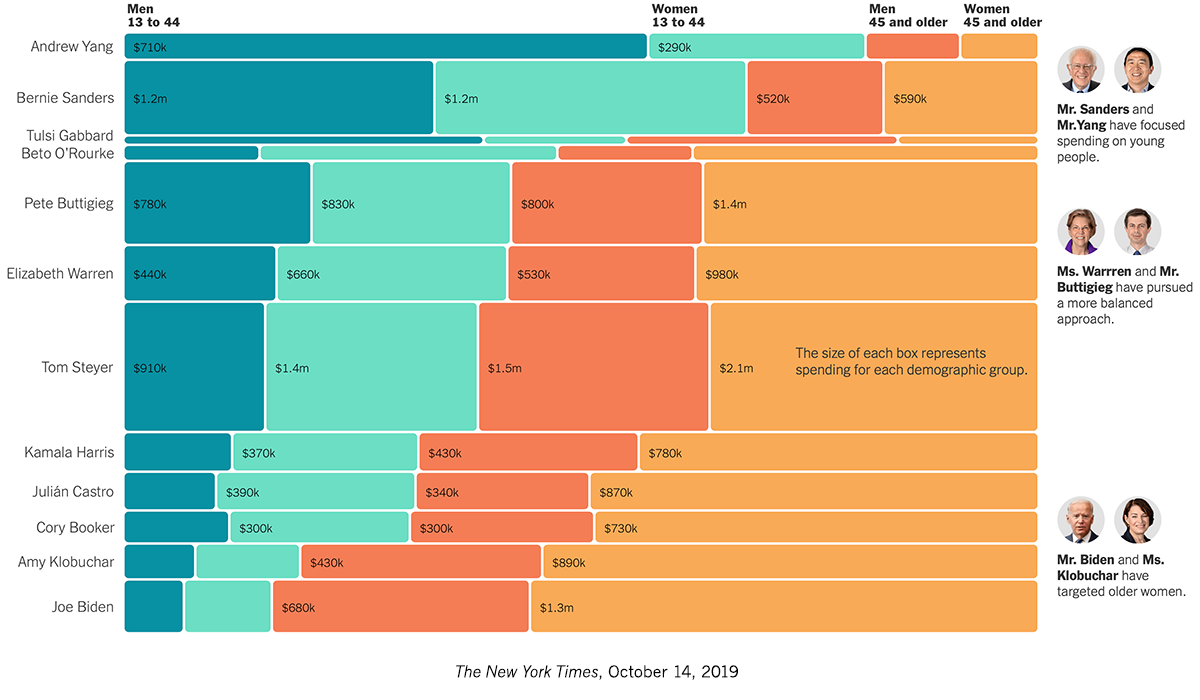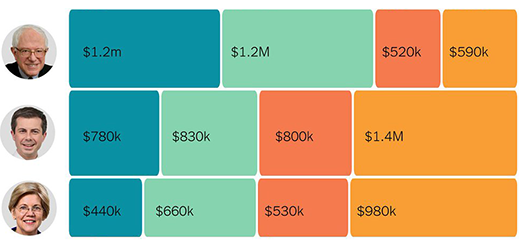
Revealed: The marketing strategies of Biden, Sanders and Warren
As the 2020 Democratic race heats up, a familiar force is already having an impact on our elections: Facebook. As The New York Times explains in a fascinating article, Facebook is now making data on political ad targeting available, providing new insight into the marketing strategies of the candidates – and the growing influence of social ads.
Facebook is beating the media incumbent: TV
While some may question if Facebook is good for our democracy, the candidates themselves don’t seem that conflicted (with the exception of Elizabeth Warren). So far, their Facebook spending is outpacing their TV spending, which reflects that Facebook has become the mass media of our times.
Go old? Go young? Or somewhere in between?
As the candidates try to solidify their standing with certain voter segments, and appeal to new ones, some are making surprising decisions.
Joe Biden, for example, has spent less than $12,000 on Facebook ads targeting voters under age 24, while Bernie Sanders has spent nearly half a million. Sure, Biden’s focus on older voters (and Sanders’ on younger ones) aligns with their strongest support, but why preach to the choir? One answer is they’re seeking people who are more likely to donate. Another is that Facebook’s algorithms encourage advertisers to double-down on whatever demographic groups are already clicking, limiting their reach.
While better to be important to one segment than none, candidates will surely need to shift tactics to broaden their appeal as primary season winds on. Candidates like Warren and Pete Buttigieg already seem to be doing this, taking a more balanced approach to targeting that’s paying off at the polls.
A disruption campaign – aimed at young men
Gender targeting is another intriguing area explored in The New York Times article. To date, most targeting skews female, but there are a couple notable exceptions. Andrew Yang, for one, is running a disruption campaign, which appeals to the male-dominated tech influencers in the Silicon Valley ecosystem. Tulsi Gabbard, a U.S. representative and combat veteran from Hawaii, spends less than Yang but also skews male, showing her tough stance against foreign dictators in ads shown disproportionately to men.
Implications for non-political marketers
Our biggest takeaway on the Democratic campaigns on Facebook so far? Sometimes the most efficient marketing tactics (email, lead generation, performance-based media) have the consequence of doubling down on existing customers and prospects, rather than bringing new groups into the fold. Unfortunately, while efficient in the short-term, this may not be a recipe for long-term growth.
Interested in making the most from your social media activity?
Knowing how your competition spends on social and what content they’re sharing can help you understand the targeting strategies used in your industry. Check out tools like Sprout Social, Radian 6 and Brandwatch, which can help you to monitor competitive activity, brand mentions, trending topics and more. Also, consider a social media spend that delivers not just eyes, but leads and revenue through well-orchestrated activation programs, like this one we developed for Panasonic.


 See what they have to say
See what they have to say